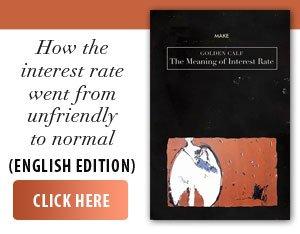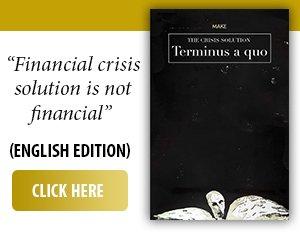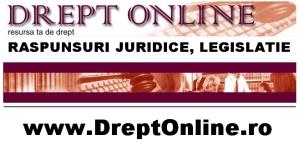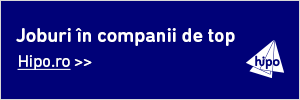
Having dominated the global financial system through massive money printing, the United States is now trying to extend that influence into the real economy through tariffs and strategic subsidies. But in a world over-indebted and increasingly competitive, this new industrial hegemony risks costing more than the US economy can bear.
After the 2008 financial crisis, the US stabilized its economy using quantitative easing (QE), a massive money printing policy made possible by the dollar's status as the global reserve currency. Today, Washington is trying to extend this logic to the industrial level, combining trade protectionism, state subsidies, and policies to relocate production. But in a world over-indebted, with a depreciating dollar and supply chains dominated by geopolitical rivals, this strategy is not guaranteed - and can become risky.
• 1. QE: The Financial Weapon of the Hegemon
Between 2009 and 2022, the Federal Reserve injected over $8 trillion into the economy through purchases of securities and financial assets. This mechanism was possible because of the dominance of the dollar:
- 50% (approximate) of global transactions are made in USD;
- 60% of central bank foreign exchange reserves are in dollars.

The world needed - and still needs - dollars for trade, debt and reserves. Thus, the inflation generated by the monetary issue was exported: the US maintained domestic stability, while the rest of the world absorbed the surplus liquidity. The mechanism worked because the demand for dollars was structural.
• 2. From dollars to subsidies and tariffs
In 2025, the Trump 2 administration seems to be adopting an economic strategy reminiscent of QE, but applied to the real economy. Although the plans are not entirely official, the statements and measures announced point to a clear direction:
- Possible 60% tariffs on Chinese goods, 25% on cars from the EU and Japan;
- Massive industrial subsidies, through the CHIPS Act, the Inflation Reduction Act and Made in America 2.0 (total estimated: 1 trillion USD).
- The stated goal: reducing import dependence and rebuilding the American industrial base.
- However, unlike financial QE - invisible and organically absorbed by global markets - this "industrial QE" is visible, conflictual and dependent on direct interventions, with major risks:
- Domestic inflation: tariffs make imported goods more expensive;
- External responses: China, the EU and other partners may retaliate;
- Low economic efficiency: Relocating production is slow and expensive.
(For a detailed analysis of the effectiveness of these measures, see the related article: "Why the US Industrial Strategy is at Risk of Failure.")
• 3. A More Hostile Economic Environment
According to the Institute of International Finance, global debt reached a record high of $324.3 trillion in Q1 2025 (325.5% of global GDP). In the US:
- Interest on federal debt reached 3.1% of GDP;
- $19 trillion in Treasury securities are due to be refinanced by the end of the year;
- Debt efficiency has declined: $1 of debt generates only $0.37 of nominal GDP.
[Note: The figures come from the "Global Debt Monitor" report (Q1 2025), published by the Institute of International Finance. It is calculated as the ratio of annual growth in global nominal GDP (Q1 2024 - Q1 2025) to the growth in global debt over the same period: $4.1 trillion / $11.2 trillion ≈ 0.37. It represents the annualized marginal efficiency of global debt.]
In this context, the fiscal space for a massive reindustrialization is fragile, and the dollar can no longer support the same global projection as in the QE era.
• 4. The dollar ≠ American products
QE worked because the dollar was indispensable. On the other hand, American products are not:
- The US holds less than 10% of global exports;
- China dominates global supply chains;
- The EU has its own industrial ambitions and policies of economic sovereignty.
In this configuration, tariffs and subsidies risk producing economic isolation, not reconstruction.
• 5. Conclusion: From tolerated to contested hegemon
The 2008 financial crisis confirmed the central role of the United States in the global economic architecture. The dollar was indispensable, and American markets supported the entire international financial system. The United States did not ask for support - but it received it, through a systemic mechanism in which the rest of the world had no choice: central banks accumulated dollars, investors bought American securities, and global trade continued to operate on the basis of the currency issued by Washington. QE was accepted not because it was legitimate, but because it was inevitable.
In 2025, things are no longer the same. The aggressive industrial strategy promoted by the Trump administration 2 - based on tariffs, subsidies, and protectionism - is not passively absorbed by the rest of the world, but is met with resistance and retaliatory measures. The US is no longer perceived as a pillar of global stability, but as the source of a deliberate imbalance.
If American monetary hegemony was imposed through systemic coercion of other actors, today's industrial hegemony is imposed through confrontation-and risks being rejected because there is no longer the will (and perhaps even the need) to support it.
The world that implicitly supported the recovery of the United States in 2008 will not repeat the gesture in the face of a conflictual strategy. And without global consensus, without shared trust, and without institutional legitimacy, the American reindustrialization project risks weakening the very position it is trying to reconsolidate.











































Reader's Opinion